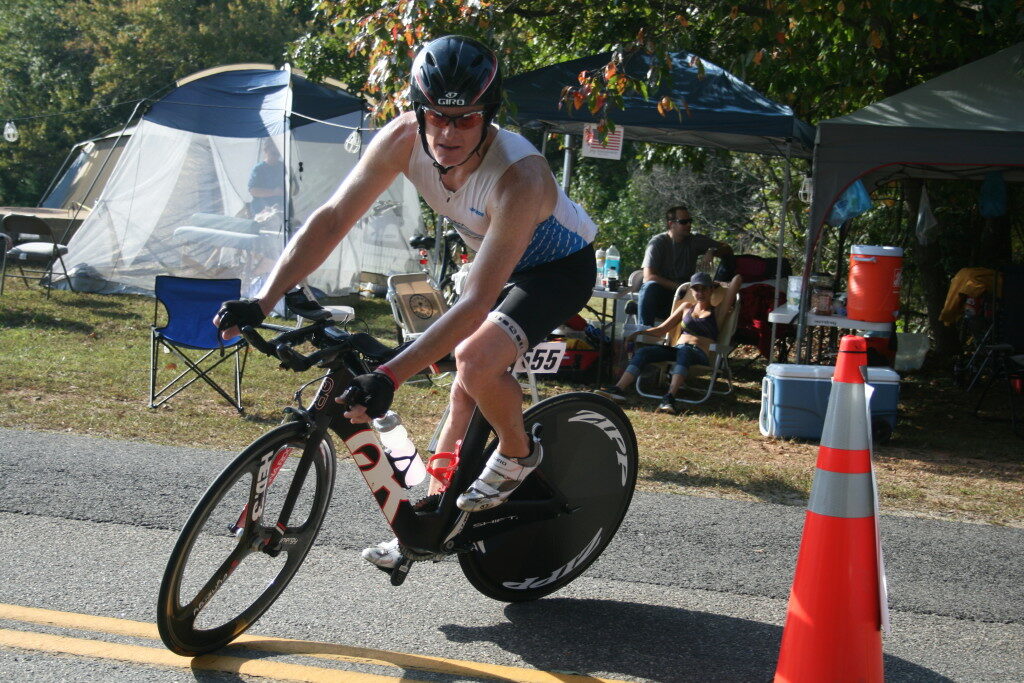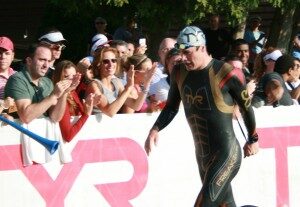Professional athletes and those speedsters in our age group may leave us wondering: why are some people so fast?

Assuming your endurance base is set, speed comes primarily from developing three physiological elements: 1) VO2max, 2) lactate threshold, and 3) economy.
The bad news: our ability across these three factors is due to genetics – at least in part.
The good news: training plays a key role for improving V02max, LT and economy! So, if you weren’t blessed with an olympian’s genetic profile: don’t despair!
Let’s explore each of these elements and why they matter for your training.
VO2max
VO2max – or the maximum volume of oxygen consumption – gets a lot of attention as a predictor of one’s aerobic performance. It sounds overly-sciency, but it simply refers to the maximum amount of oxygen that you can pump in and out of your lungs.
VO2max can be expressed as: 1) as an absolute value, which gives a snapshot of how much aerobic capacity you possess overall, or 2) as a relative value, which considers your aerobic capacity relative to your size. If two individuals have the same VO2max, but one is larger, the smaller person will have a higher relative VO2max.
In order to improve your VO2max, you have to train at V02max. This training could include short, maximum-effort intervals with lots of rest between each interval. Place VO2max efforts carefully within your overall training plan, by making sure you have easier days before and after the sessions.
VO2max is an important part of an athlete’s ability, and those with higher VO2max values do tend to be faster. However, it’s only one part of what contributes to our ability to swim, cycle or run well. And, it’s not always true that the athlete with the higher VO2max will win the event – especially for endurance athletes. Lactate threshold and economy can be even more important for us long-course types.
Lactate Threshold
Lactate threshold (LT) is the point when your body produces more lactic acid than it can clear. When training at LT, you’ll feel those burning sensations in your muscles and lungs. You can only spend a limited amount of time at effort levels above this threshold, and anywhere from 20-60 minutes (for really well-trained athletes) at this intensity.
LT is a useful baseline for determining heart rate zones. Efforts below the threshold are more aerobic in nature, while workouts above the threshold are more anaerobic in nature.
The implications for training: Increase your lactate threshold, and you can increase your speed–regardless of your max. There are a variety of workouts that help the body use lactate as fuel and to clear lactic acid more efficiently, including threshold-paced intervals, tempo efforts, and lactate dynamics training (such as fartleks).

Economy
Economy is an equally important component of unlocking your speed potential. It refers to how much oxygen you consume at sub-maximal effort.
Said differently, it’s the energy cost of your movement. The lower the energy cost, the faster you can move at a particular effort level.
Let’s think about two runners: Jane and Suzy. Jane has a higher VO2max than Suzy. However, Suzy is a significantly more economical runner than Jane, and is able to run as fast as Jane in short distance races, and faster in longer distance races. Because Suzy is more economical in her movements, she is able to perform at a comparable level. True story.
Improve your economy by developing an efficient form, correcting muscular imbalances, increasing lactate threshold, and engaging in sport-specific training. Your gear can also help economy of movement–for example, increasing aerodynamics on the bike, or wearing a light running shoe.
To improve your economy in swimming, cycling or running, you must train in that sport. Improvements in economy for one sport do not necessarily translate to improvements in economy for a different sport. This includes not only workouts designed to increase VO2max, lactate threshold or endurance, but also those drills that you may dread doing in the pool, on the trainer or on the road are worth the time and energy you put into them. The reward is a greater economy of movement.
Training each of these elements will vary depending upon the particular cycle of training you are in: base, build, peak, or “off” season. Incorporating workouts with the purpose of improving your aerobic profile in any of these areas should carefully consider where you are in your annual training plan, key races, and the recovery that is necessary for each effort – especially the high intensity efforts.
